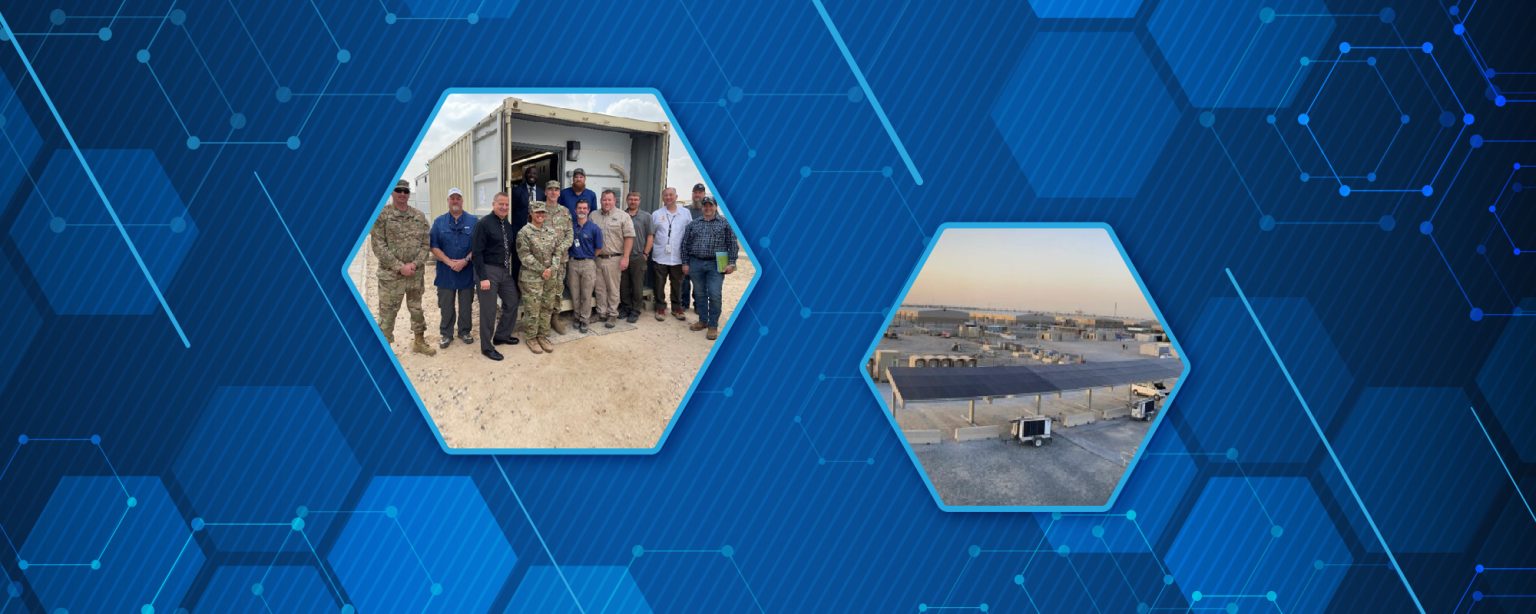When U.S. military members are deployed in the Middle East, they often have limited access to sustainable energy sources. To help reduce carbon emissions from troops abroad, Idaho National Laboratory and the U.S. Department of Defense are developing three pilot demonstration projects that will establish clean energy and sustainability solutions for the U.S. Army Central Command in Kuwait. The projects are part of a program called Operational Energy.
The projects have significant environmental implications for Kuwait, which gets 99% of its power from fossil fuels. Operational Energy will diversify the area’s energy economy with resilient and sustainable power sources. These efforts will also improve quality of life for the soldiers. In particular, troops will no longer eat and sleep in the same space as the diesel generators, grappling with the fumes and noise.
The Three Projects
The inaugural project focused on a microgrid solution to store energy and eliminate the need for costly and energy intensive solutions like diesel generators. “The first project successfully guided the first hybrid microgrid installation for the U.S. in Kuwait,” said Bob Turk, one of the managers on this project. “We used advanced inverters, battery storage and specialized solar photovoltaic implementations” so the Central Command operation area in Kuwait can operate more sustainably.
More than 60% of this microgrid’s operating power will be renewable, combining battery and solar energy. When the battery gets low, the local diesel generator (now integrated into the microgrid) will automatically supply the load and recharge the battery. This generator will supplement the microgrid’s renewable power system only when needed. The microgrid also makes it possible to cut the number of spot generators serving two buildings next to the microgrid components. This will ultimately save DOD around 7,500 gallons of diesel fuel annually, and over $65,000 per year in fuel, generator leasing, and operations and management costs for just this pilot project.

The second installation successfully implemented a unique 40-kilowatt carport solar power system design. “This shows that a collaboration between solar inverters and diesel generation can be achieved while maintaining stable operations,” said Turk. “This system eliminates the need to rely exclusively on diesel and proves that sustainable solutions can serve the same purpose.”
A water reclaiming and recycling installation rounded out the three projects and was primarily focused on environmental sustainability. The team installed a system that collects shower water and sends it through a three-phase filtration system, as well as chlorine and ultraviolet sanitation. The filtered water is then used for flushing toilets. This allows the facility to use a portion of its water twice before discarding it, resulting in significant water savings. It also reduces the Central Command area’s environmental impact because most of the water used is trucked in, with a high cost per gallon, both in dollars and carbon emissions.
Where Does INL Fit?
“INL has been with this project since its inception,” said Porter Hill, one of the Kuwait field implementation team members. “Our efforts began with basewide feasibility studies, thinking about different energy options, building efficiencies and power system possibilities that might work for the (Central Command) area.”
From the feasibility study, the team was able to lay out several options for program development concepts and field implementations. The INL team initially served as subject matter technical experts and in an advisory role. Then, in early 2022, some of the team members traveled to Kuwait to help conduct the pilot tests for each of the three installations.
“We’ve tried to stay a little more engaged with this project to make sure the team out in Kuwait felt our support and understood our rationale behind major design decisions and best practices for moving forward,” said Kurt Myers, another INL manager on the project. “This is truly a first of a kind effort, and it’s been a privilege to be able to shepherd this project through both the challenges and triumphs.”

The data collected from these efforts will inform further microgrid research and development activities. It will inform aspects of novel, inverter-based microgrid system controls. It will also help the team adjust its control algorithm approaches and may be used for artificial intelligence applications in microgrid management systems development, including the automation of changes to control settings depending on forecasts, use-cases and time of year.
“The research and development implications of this project are substantial,” Myers said. “When we work on projects like this, from base-wide feasibility to pilot scale implementation, we’re able to figure out the bugs and kinks with the design as we go along. Our efforts here will inform future microgrid implementations as we continue pushing toward net-zero solutions worldwide.”





